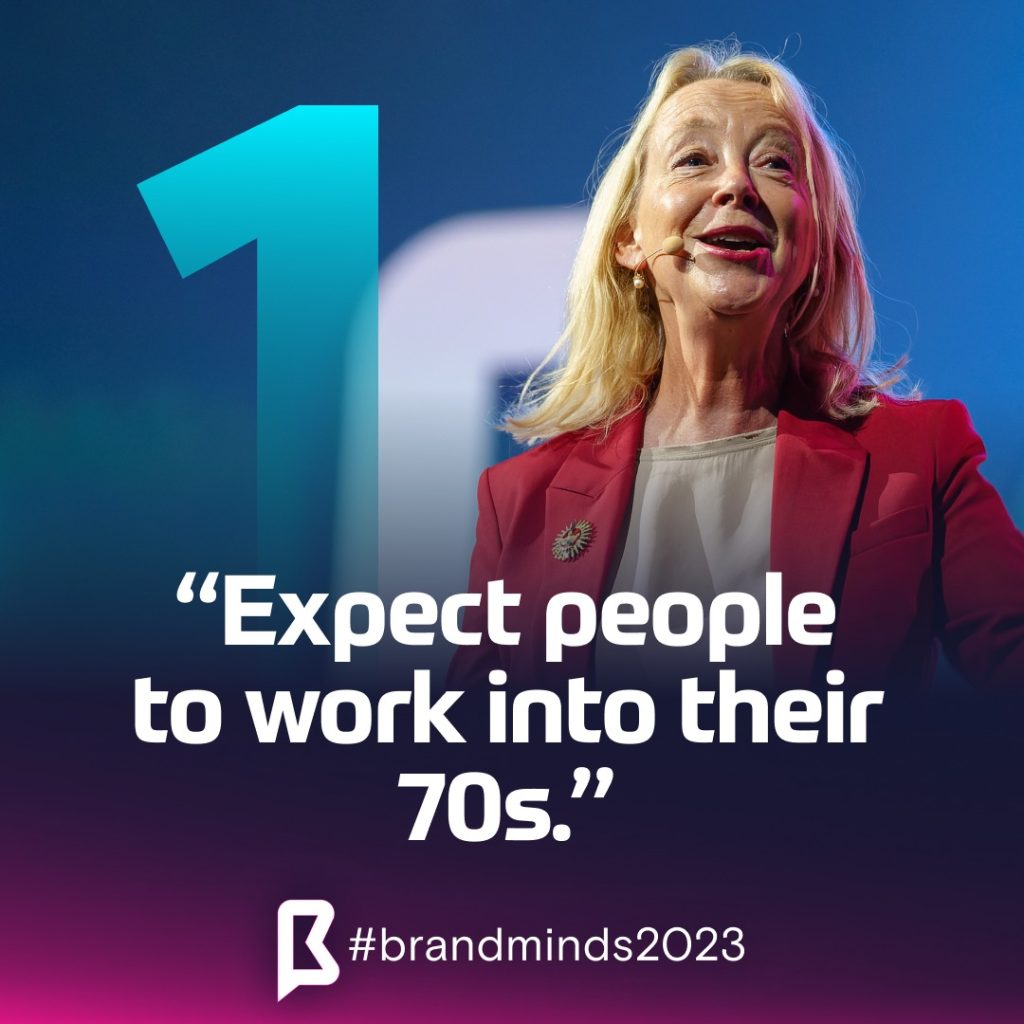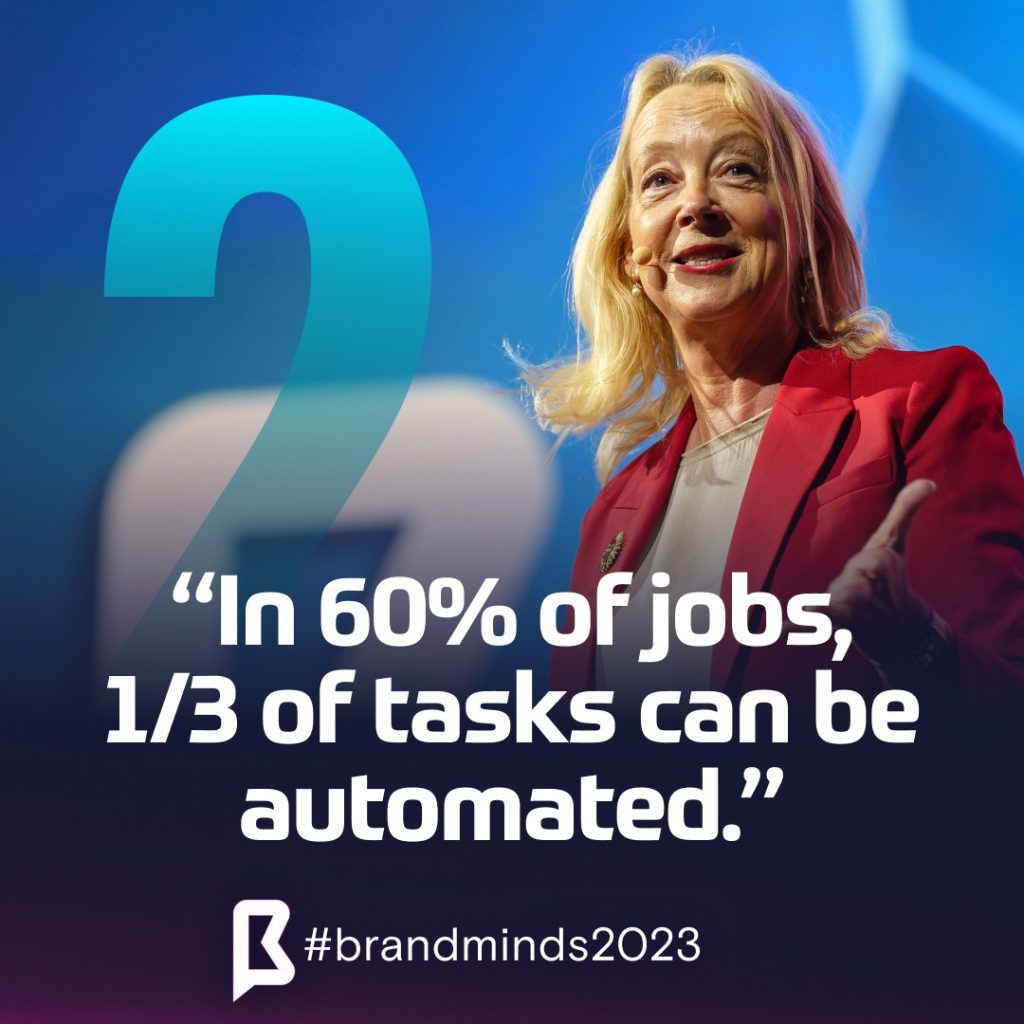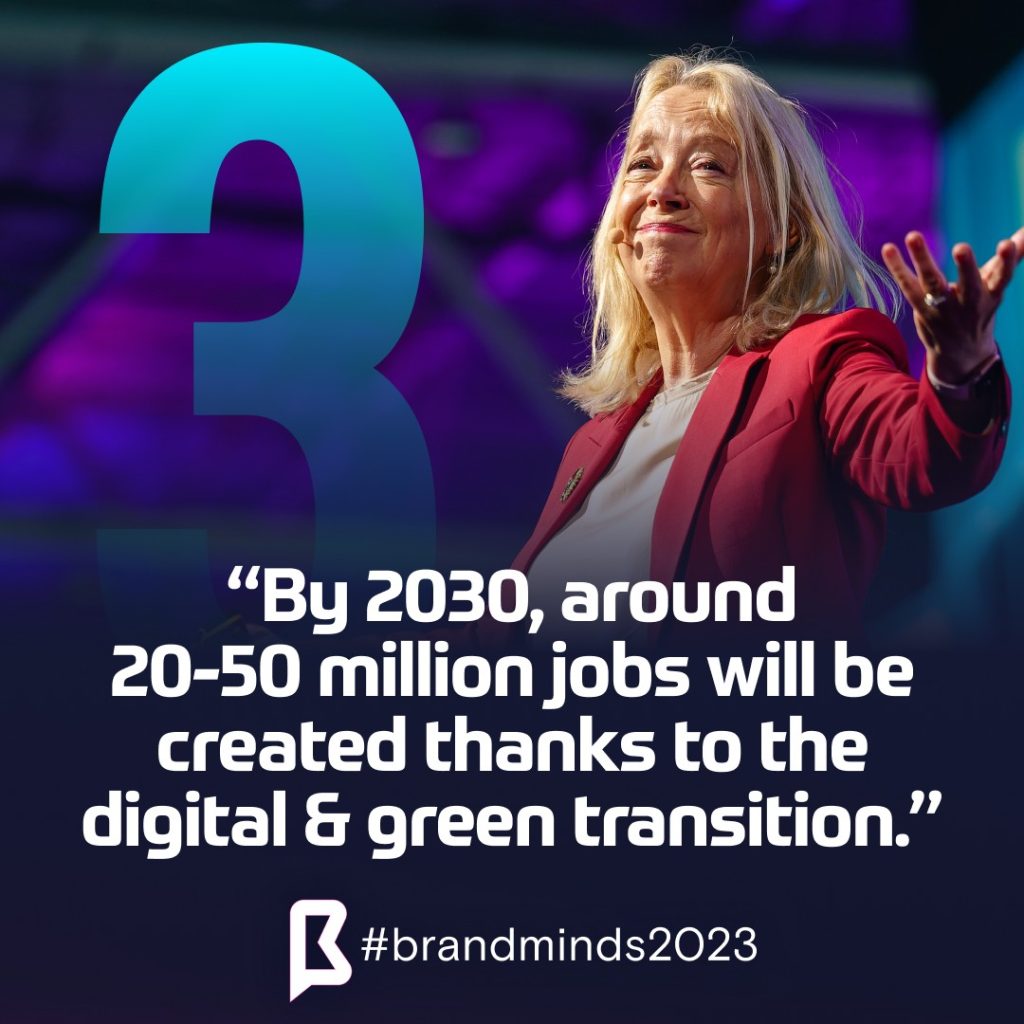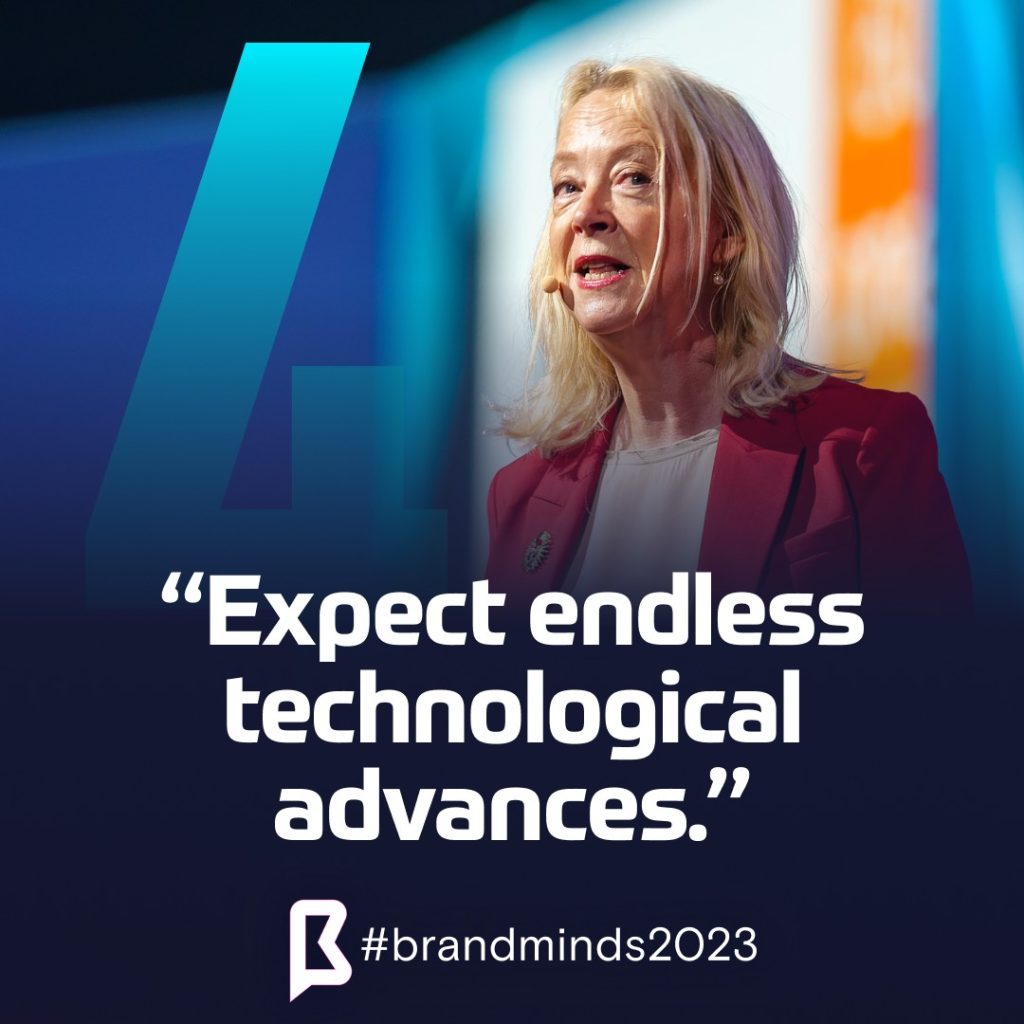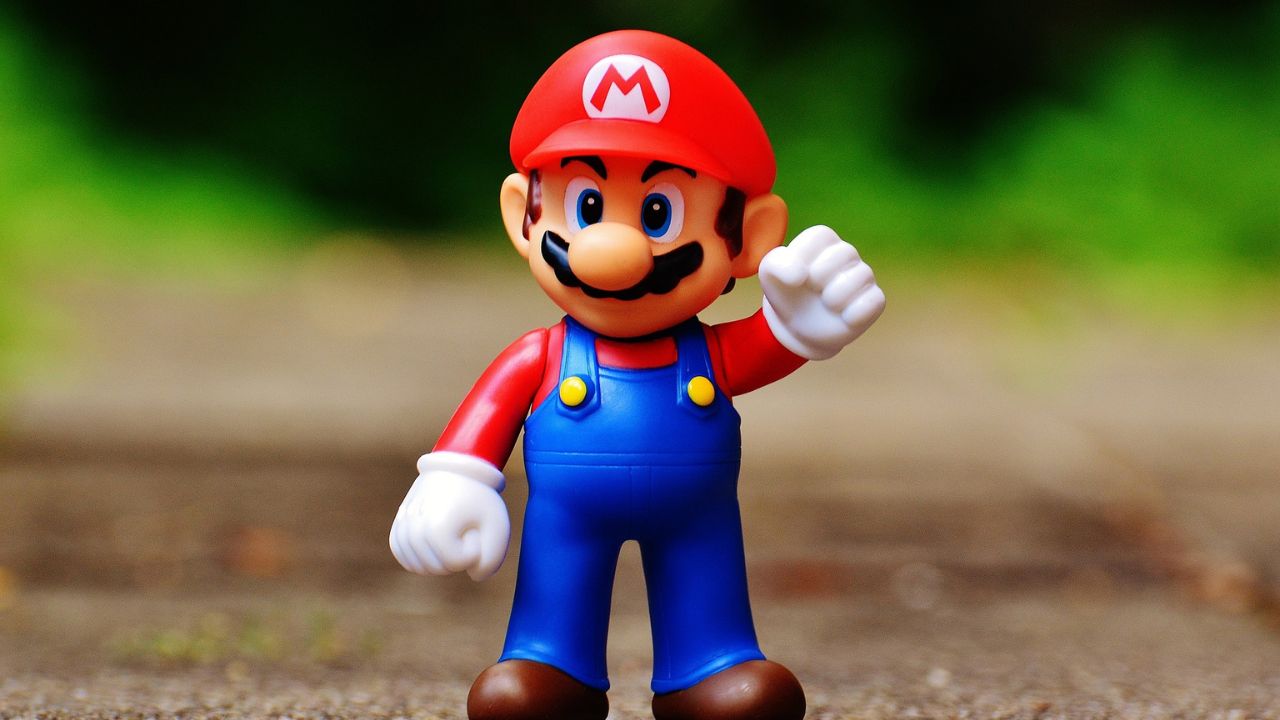One of the most important tasks of top executives is to make sure, in collaboration with the head of human resources, that new talent comes into the company. Professionals whose skills, expertise, education and attitude help the company meet its business goals and carry out its mission.
These professionals don’t work in a bubble, isolated from each other. Given the highly dynamic profile of the business world over the last years, when digital disrupted entire industries from top to bottom and forced companies to adapt and reinvent themselves, employees need to collaborate and work in teams.
The structure of the team is of paramount importance. Who needs to be part of the team? Is it better to have seniors outnumbered by juniors? How long it takes for a junior to become a senior? How engaged and motivated continues to be the employee who reached the highest level of expertise?
The S learning curve is an efficient team development strategy
The S learning curve strategy is a great framework to build a winning team and a highly efficient tool for employee development. This framework is the essence of professional development for employees at every stage of their careers.
Created by prominent sociologist and communication specialist Everett Rogers, the S learning curve is the template for the innovation process. The curve was later developed by team performance expert and BRAND MINDS 2022 speaker Whitney Johnson to map out the stages of building the best team.
By applying the S learning curve model to the professional learning and development of the employee, we can place every employee in one of the following categories:
Beginners
Fast learners
Experts

The 3 stages of employee engagement
Each employee and team member is in a different stage of the learning curve. It is the talent development specialist’s job to understand at which stage is the employee and to discover what is the next step for them and how to best help the team and the company from that place.
When the employee is at the first stage, their work is exciting and challenging. In the second stage, that of fast learners, the employee feels the work they are doing is pushing them to become better and overdeliver.
When the employee becomes an expert, the work might start to feel not as challenging and exciting as in the previous stage and it is possible for their engagement level to drop.
The solution? To go back to the first stage of the S learning curve and take on challenges of a different nature within the company, maybe in a different team or a different department – all in line with their set of skills.
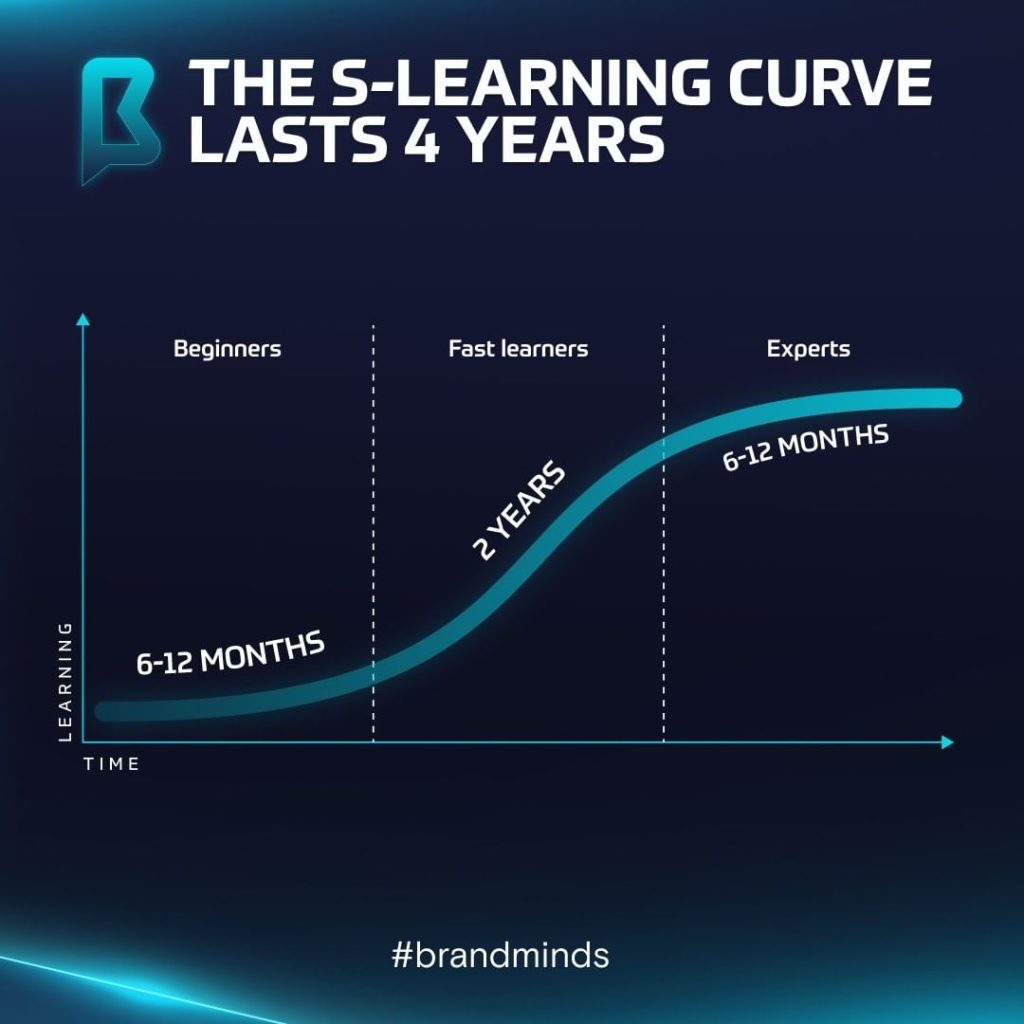
The employee goes through the S learning curve in 4 years
According to the latest research on employee development, every employee goes through the S learning curve in 4 years on average.
This is a very important and necessary piece of information for recruitment and talent development professionals. Based on this knowledge, they can create development plans for various teams through which they can maintain a high level of motivation and engagement among employees.
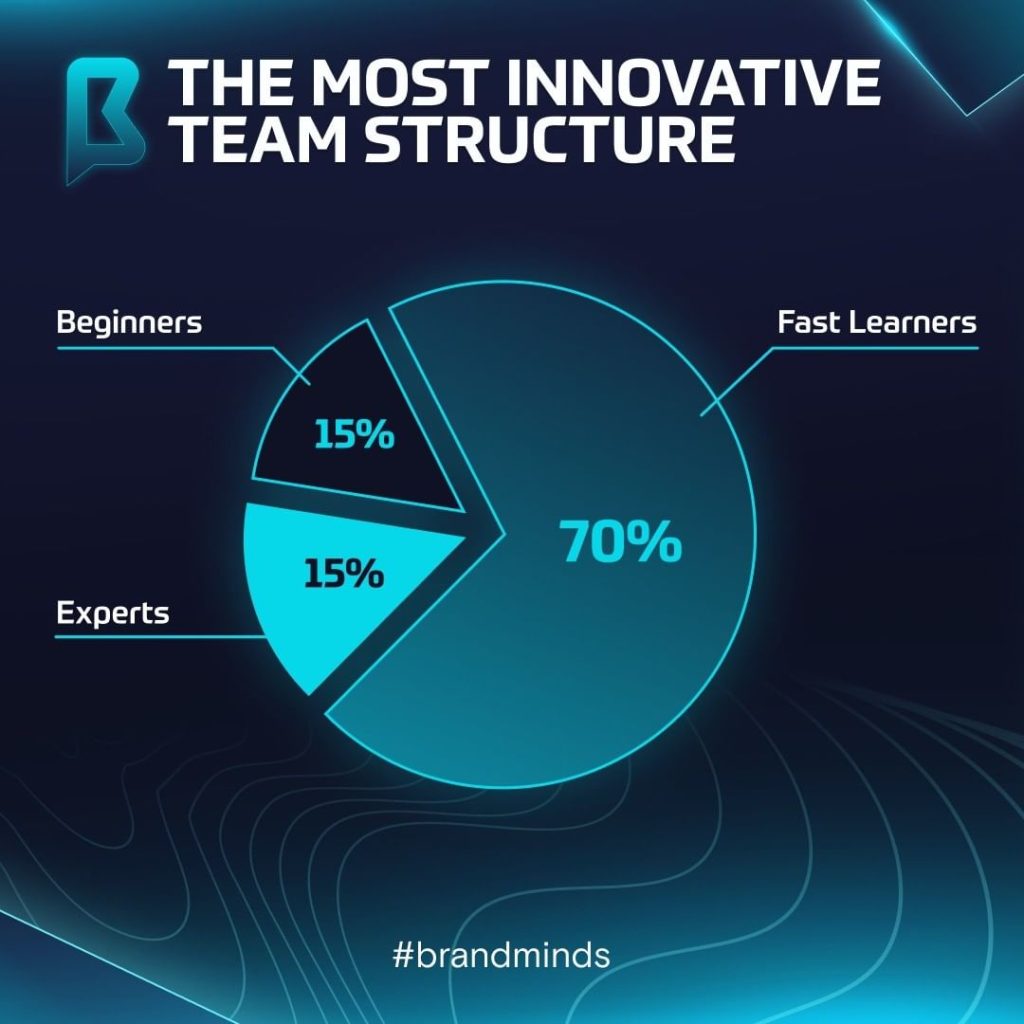
The perfect structure of the winning team: 15% beginners, 15% experts and 70% fast learners
Contrary to what you might believe, a successful team is not comprised of experts, but fast learners because they absorb every knowledge available to them to do a stellar job.
What is the reasoning for the 15%-15%-70% team structure?
The beginners are the employees who ask questions and are highly driven to learn as much as possible. With a fresh and unbiased view of their jobs and the company, these employees can highlight aspects of the business or operational processes that the other team members have missed thus creating new opportunities for change.
As far as the experts on the team are concerned, it is recommended to cap their number to 15%. They serve the team best when they have the necessary framework to help them pass on their body of knowledge.
The fast learners are the engine of the company. They have a high level of productivity, meet their goals efficiently and push themselves and the business further.
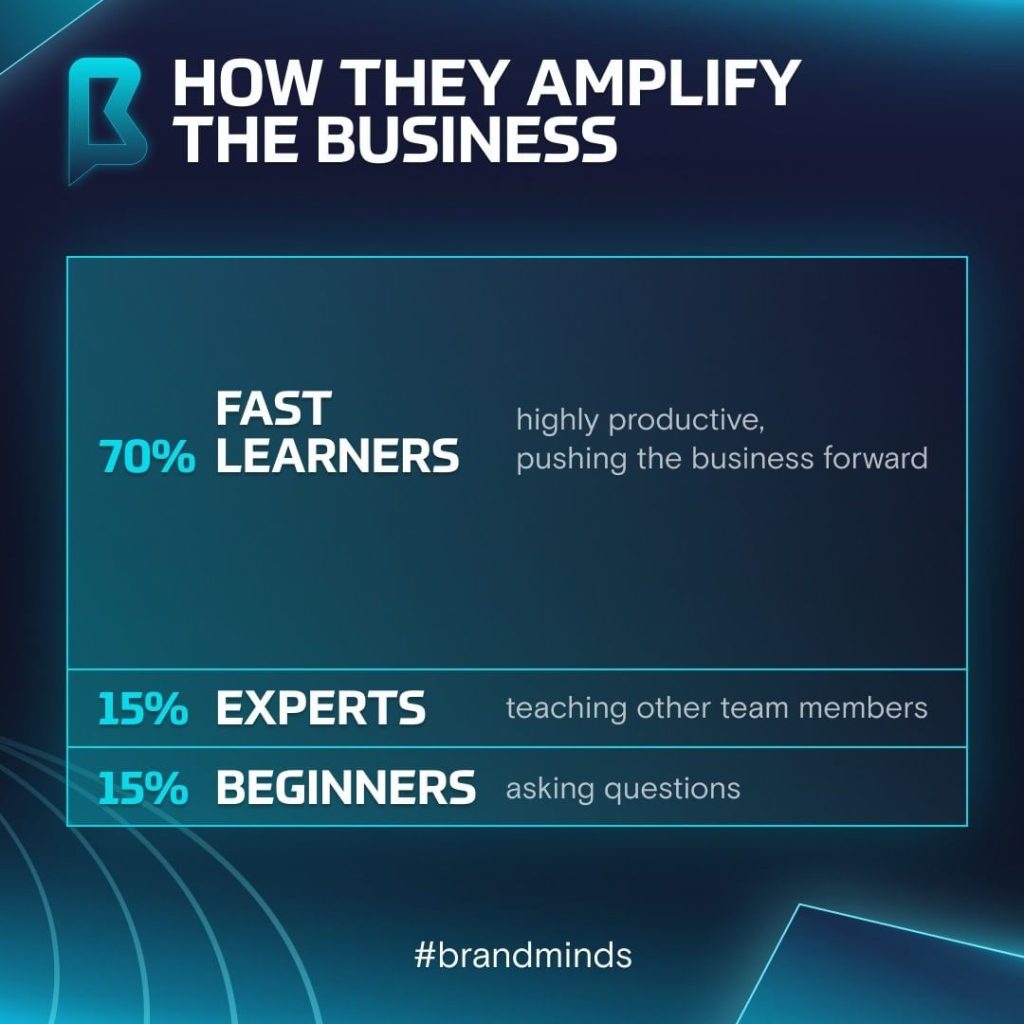
There you have it: if you want to build the best team you need to develop every member of your team. Employee development is one of the most important elements of company culture.
Do you want to protect your company from the Great Resignation or the quiet quitting movement?
Invest in your employees, and help them improve their professional skills because when they grow, your business grows.
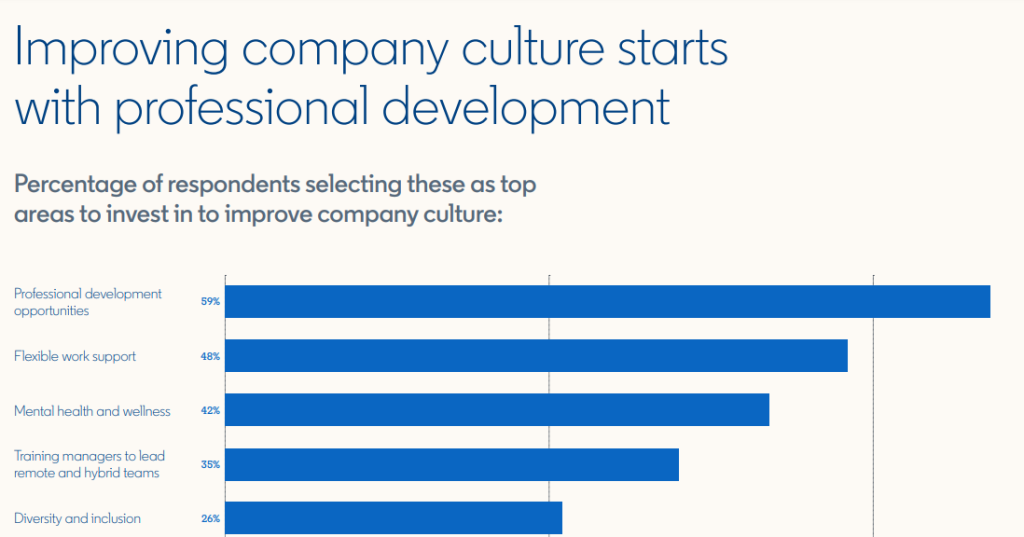
BRAND MINDS is the best professional development event for your team. It’s like an MBA except you don’t send your employees to eight training programs over the course of a year, and they still get the expertise of eight business leaders with a combined experience of 160 years.
One of the business leaders whose expertise is focused on high-performing teams is Lynda Gratton, Future of Work Strategy Expert @London Business School.
She is an award-winning author on the future of work and the role of corporations. As the Professor of Management Practice at the London Business School, she designed the ‘Human Resource Strategy in Transforming Companies’ programme and has since led it for over 20 years. The programme is considered one of the world’s leading programmes for people and organisations.
Here are her takeaways directly from the stage at BRAND MINDS 2023:
